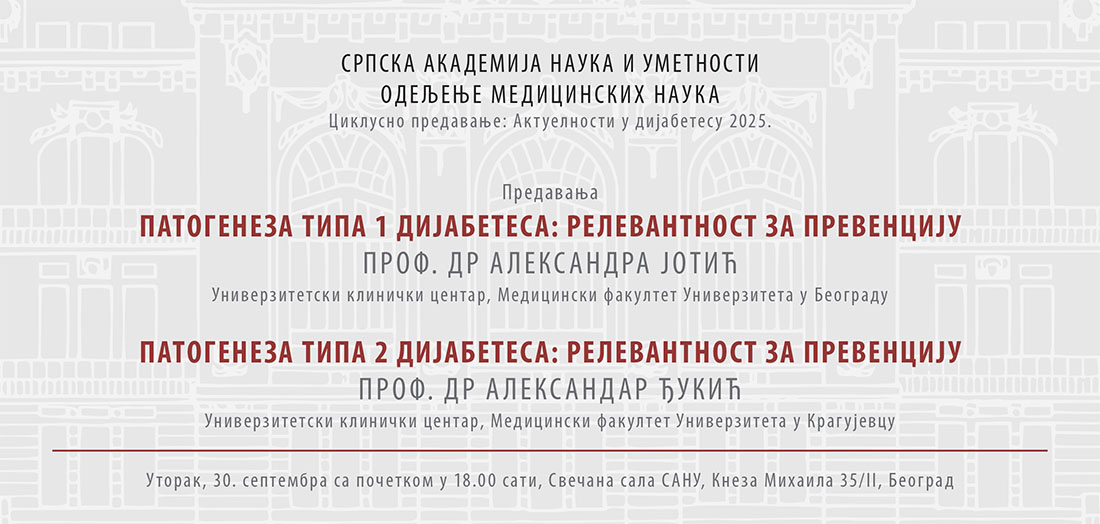2025 Updates in Diabetes: Lectures by Professor Aleksandra Jotić, MD and Professor Aleksandar Lj. Đukić, MD
As part of the lecture series ’Updates in Diabetes 2025’, two lectures were delivered on Tuesday, 30 September, at the SASA Grand Hall. On this occasion, Professor Aleksandra Jotić gave a lecture titled ’Pathogenesis of Type 1 Diabetes: Implications for Prevention’, while Professor Aleksandar Lj. Đukić, MD, discussed the topic ’Pathogenesis of Type 2 Diabetes: Implications for Prevention’.
According to Prof. Jotić’s abstract, it has been demonstrated that the prevalence of Type 2 Diabetes has been on the rise globally. The most recent data from the International Diabetes Federation indicate that this type of diabetes is no longer a disease affecting the pediatric population, given that half of newly diagnosed T1D cases occur in individuals over the age of 20. Simultaneously, it has been established that people affected by T1D have their expected lifespan drastically shortened.
‘Interest in T1D prevention has been growing within the scientific community, and a breakthrough has only recently been reached, when it was shown that the onset of T1D can be delayed in individuals at high risk. Teplizumab, the first immunomodulatory agent —a human anti-CD3 monoclonal antibody —slows and mitigates the autoimmune destruction of β-cells. In this context, all major diabetes organisations recommend identifying individuals at risk for T1D, such as relatives of people with T1D, as well as members of the general population having autoimmune diseases,’ concludes Professor Aleksandra Jotić.
Professor Aleksandar Lj. Đukić states that diabetes mellitus type 2 (T2DM) is a complex, polygenetic disease with heterogeneous pathophysiology, primarily characterised by insulin resistance associated with obesity and progressive dysfunction of pancreatic β-cells. Globally, the number of people with diabetes mellitus is estimated at 588.7 million, with projections of exponential growth, so that an increase of 45% (852.5 million) is expected in 2050. In the Republic of Serbia, there are 718.5 thousand patients, with a prevalence of about 13.3%, with a share of 33.5% remaining undiagnosed.
‘Understanding the pathophysiological mechanisms related to the development of T2DM is essential for prevention, which focuses on correcting key disorders such as insulin resistance, β-cell dysfunction, and adipopathy. However, it is equally important to address environmental factors and recognise genetic and epigenetic influences. Clinical research on T2DM prevention has employed both non-pharmacological and pharmacological approaches. Most non-pharmacological studies combine multiple lifestyle interventions — diet, weight reduction (for pre-obese and obese individuals), and physical activity — which, according to meta-analyses, reduce the risk of developing T2DM by 37%. As for pharmacological methods, various drugs have also been tested, including antidiabetic ones, anti-obesity medications, and incretins, with differing success in lowering disease risk,’ explains Professor Aleksandar Lj. Đukić.

